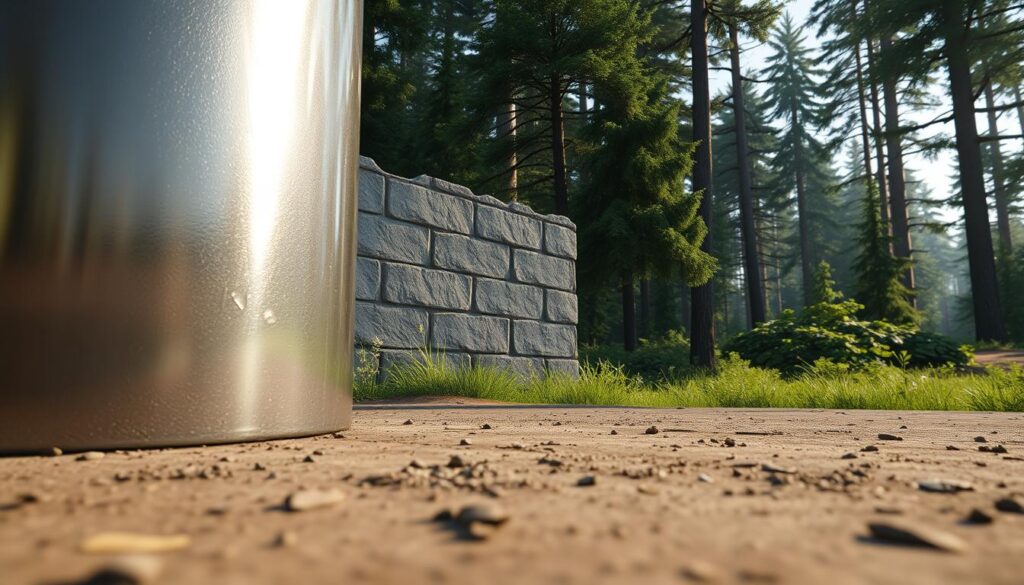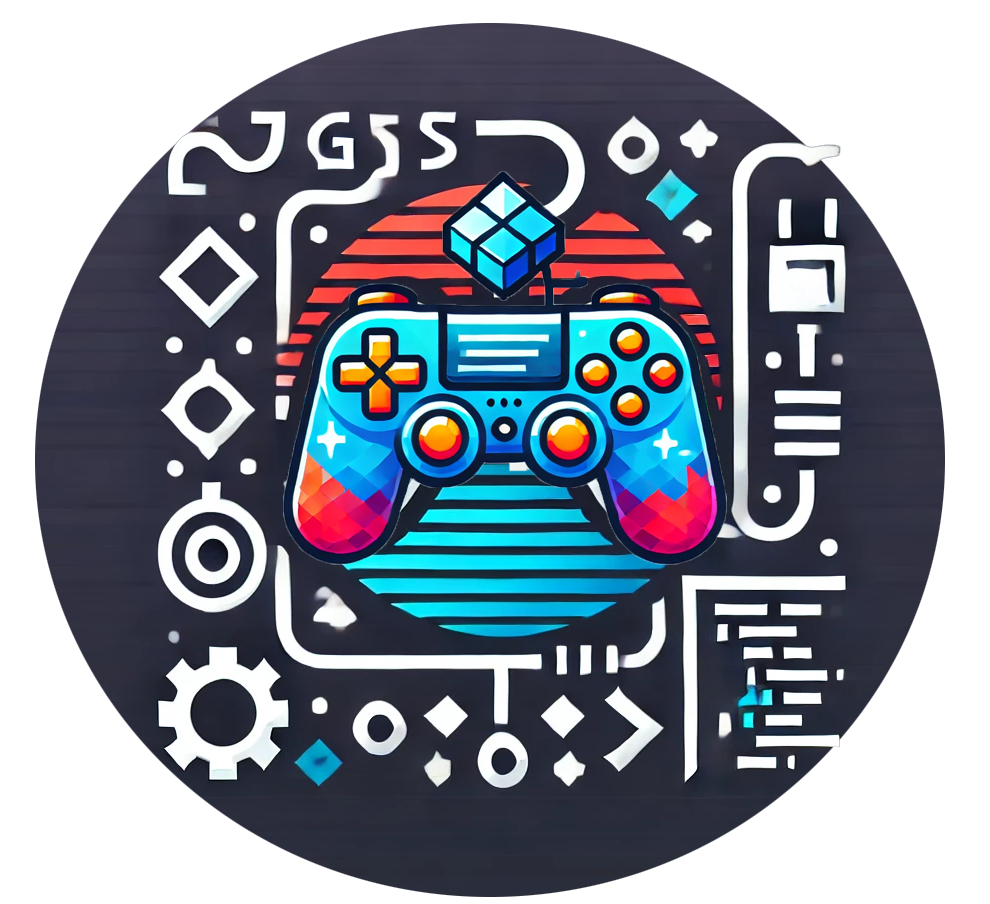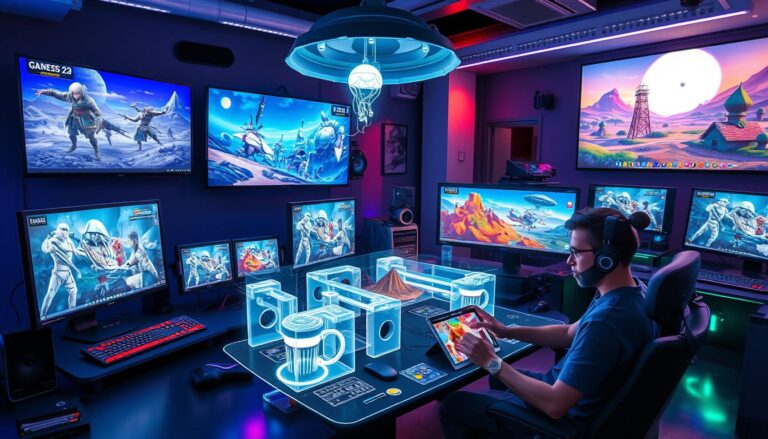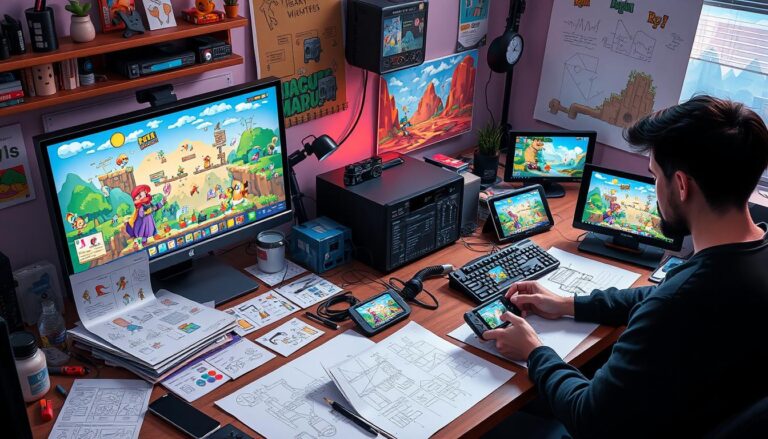How Can You Simulate Real-World Materials Using PBR in 3D Games?

Physically Based Rendering (PBR) has changed 3D game development. It lets developers make visuals that look real. This method simulates how light acts on surfaces, just like in the real world.
Today’s game development software uses PBR. This gives designers tools to make detailed textures and materials. PBR shows how materials reflect light, making games look more real.
Game developers use PBR to make games feel more real. They create environments that react to light and feel natural. With PBR, artists can make materials like metal and wood look very realistic.
PBR mixes art and science in 3D game development. It helps teams create amazing visuals. As game engines get better, PBR keeps making games look stunning for players all over the world.
Understanding PBR Fundamentals in Game Development
Physically Based Rendering (PBR) is a new way to make games look real in Unity. It makes digital worlds feel like the real thing. This method makes materials and surfaces look incredibly real.

Now, game tools use PBR to make materials look right. It’s all about how surfaces act with light. This makes games feel more real and engaging.
Core Components of PBR Materials
PBR uses special texture maps to make materials look real:
- Albedo Map: Shows the material’s base color
- Metalness Map: Tells if a surface is metallic
- Roughness Map: Shows how smooth or bumpy a surface is
- Normal Map: Adds depth and detail to surfaces
Physical Properties and Light Interaction
Unity game developers know materials must act like they do in real life. Each surface does something different with light. This makes games look and feel more real.
Energy Conservation Principles
PBR follows rules to keep things looking right. It makes sure no surface reflects more light than it gets. This keeps games looking real and true to life.
Essential PBR Maps and Texture Types in 3D Game Development

Physically Based Rendering (PBR) is a game-changer in 3D game design. It brings visual realism to new heights. Game development companies use advanced texture mapping to make digital worlds feel real.
The PBR workflow needs several key texture maps. These maps work together to show how materials look and feel:
- Albedo Maps: Show the base color and look of a surface
- Normal Maps: Add fine details and simulate tiny geometry
- Roughness Maps: Decide how shiny or dull a material looks
- Metallic Maps: Show if a surface is metallic or not
- Ambient Occlusion Maps: Add shadows and depth
Game companies use these maps to make materials look real under light. By mapping each texture type well, developers can make surfaces that act like real ones. They reflect, absorb, and interact with light just like in the real world.
Modern 3D game design needs top-notch visuals, and PBR texture mapping is key. It helps game artists create stunning, lifelike worlds. These worlds pull players into detailed virtual spaces.
Creating Realistic Materials with PBR Workflows
Creating realistic materials is key in 3D game development. The Physically Based Rendering (PBR) workflow changes how we make game assets. It brings unmatched visual authenticity to games.
Material Creation Pipeline
Creating PBR materials needs a careful plan. Game development services use a set process:
- High-resolution 3D model generation
- Precise UV mapping techniques
- Texture map creation using specialized software
- Detailed surface property definition
Texture Development Process
Texture creation is all about detail in 3D game development. Artists use tools like Substance Painter and ZBrush for fine details.
- Capture real-world material references
- Generate base texture layers
- Apply micro-detail texturing
- Implement realistic wear and aging effects
Quality Assurance and Testing
Testing is critical to ensure PBR materials work well in games. Professional game development services check texture quality and optimize performance.
The aim is to create visuals that feel real. This makes games more immersive and lifelike.
Advanced PBR Techniques for Modern 3D Game Development
Game developers are now using advanced Physically Based Rendering (PBR) techniques. These techniques help create stunning visuals in games. Unity game development experts use these methods to make digital worlds look amazing.
Advanced PBR techniques focus on how materials interact with light. They use real-world light behaviors to create detailed materials. This includes:
- Subsurface scattering for translucent materials
- Anisotropic shading for metallic surfaces
- Clear coat shader implementations
- High Dynamic Range (HDR) lighting simulations
The best game development software uses complex light models. These models consider things like the angle of light, surface roughness, and how reflective it is. This makes game environments look very real.
Today, Unity game development focuses on both looks and performance. Developers use smart rendering and efficient shaders. This way, they can add advanced PBR features without slowing down the game.
Using these advanced techniques makes game worlds come alive. They offer deep visuals and real material looks. This draws players in and makes games more immersive.
Conclusion
Physically Based Rendering (PBR) has changed the game development world. It gives artists and developers new ways to make games look amazing and real. With PBR, games can feel more real and fun to play.
PBR brings advanced graphics to games. It lets developers make light, textures, and materials look just like in real life. This makes games look better and feel more real, keeping players interested.
PBR is key to making games look better. Companies that use PBR well can make games that look like movies. This makes games more exciting and engaging for players.
The future of PBR looks bright. New techniques and better algorithms will make games even more real. This means we can expect even more amazing games in the future.





